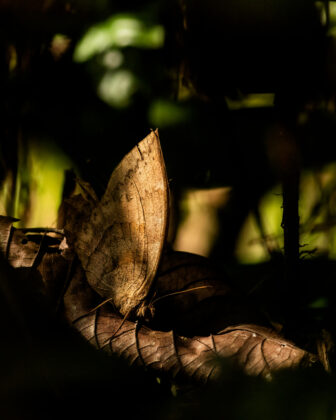Butterflies are one of the bioindicator groups that we have been studying at the Manu Learning Centre (MLC) for around 10 years as part of our long-term biodiversity monitoring projects. Due to their small size, sensitivity to environmental changes, and short life span, they provide a snapshot of the state of the forest at any given moment and allow us to track changes across generations in a relatively short time period.
In the butterfly monitoring project, we use traps baited with either fish or banana. The traps are installed in each of the three forest types at the MLC, to allow us to investigate the impacts of forest regeneration on these species. Furthermore, we set up traps at three different heights in the forest: in the understory, mid-height, and high up in the canopy, to assess the use of different forest strata by butterflies.

Recently, during our butterfly survey, we found a huge number of butterflies of the Charaxinae subfamily in the partially cleared and now regenerating (PCR) and selectively logged and now regenerating (SLR) forest types. These butterflies are characterised by their superb camouflage, with most of them having an uncanny resemblance to a dead leaf. This incredible adaptation allows them to lay low and avoid attention from potential predators such as birds. However, hidden on the inside of the wings when closed is usually a stunning bright blue or orange colouration. Identifying the species of Charaxinae always proves to be a challenge, due to their similarities. The majority of the individuals that we observed were caught in the low traps in PCR and SLR, indicating that these habitats may provide the preferred resources for these species and that they are more likely to utilise the understory of the forest.
MSc Joseph Oakley – Research Coordinator
